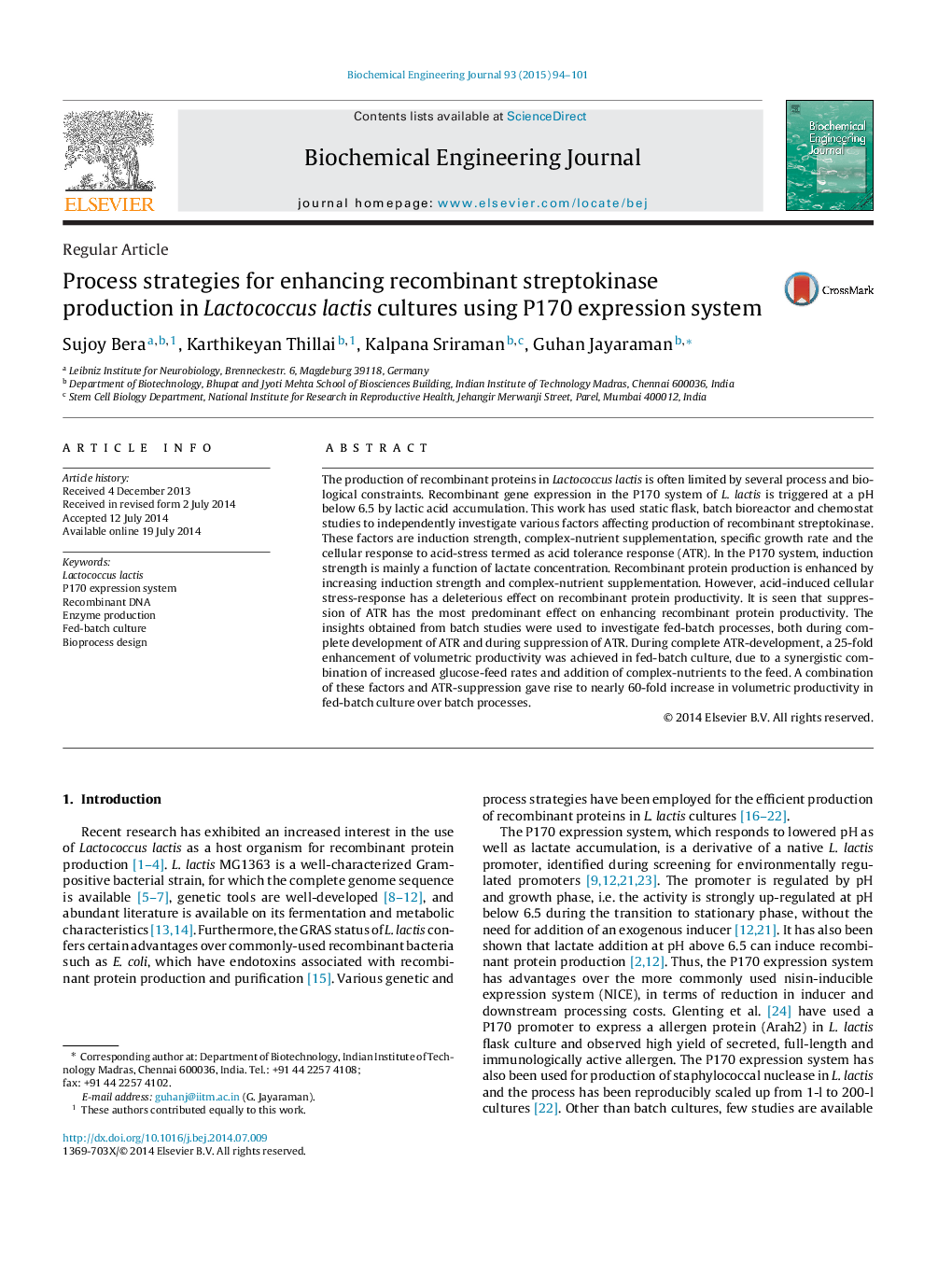| Article ID | Journal | Published Year | Pages | File Type |
|---|---|---|---|---|
| 3061 | Biochemical Engineering Journal | 2015 | 8 Pages |
•The P170 promoter was used to express recombinant streptokinase in batch and fed-batch cultures of Lactococcus lactis.•Streptokinase production is affected by induction strength, complex-nutrient supplementation and acid tolerance response.•Induction strength depends on lactate concentration in the culture, with required lactate depending on culture pH.•Recombinant streptokinase production is mostly enhanced by suppression of acid tolerance response.•A combination of above factors resulted in a 60-fold increase in productivity in fed-batch cultures over batch cultures.
The production of recombinant proteins in Lactococcus lactis is often limited by several process and biological constraints. Recombinant gene expression in the P170 system of L. lactis is triggered at a pH below 6.5 by lactic acid accumulation. This work has used static flask, batch bioreactor and chemostat studies to independently investigate various factors affecting production of recombinant streptokinase. These factors are induction strength, complex-nutrient supplementation, specific growth rate and the cellular response to acid-stress termed as acid tolerance response (ATR). In the P170 system, induction strength is mainly a function of lactate concentration. Recombinant protein production is enhanced by increasing induction strength and complex-nutrient supplementation. However, acid-induced cellular stress-response has a deleterious effect on recombinant protein productivity. It is seen that suppression of ATR has the most predominant effect on enhancing recombinant protein productivity. The insights obtained from batch studies were used to investigate fed-batch processes, both during complete development of ATR and during suppression of ATR. During complete ATR-development, a 25-fold enhancement of volumetric productivity was achieved in fed-batch culture, due to a synergistic combination of increased glucose-feed rates and addition of complex-nutrients to the feed. A combination of these factors and ATR-suppression gave rise to nearly 60-fold increase in volumetric productivity in fed-batch culture over batch processes.
